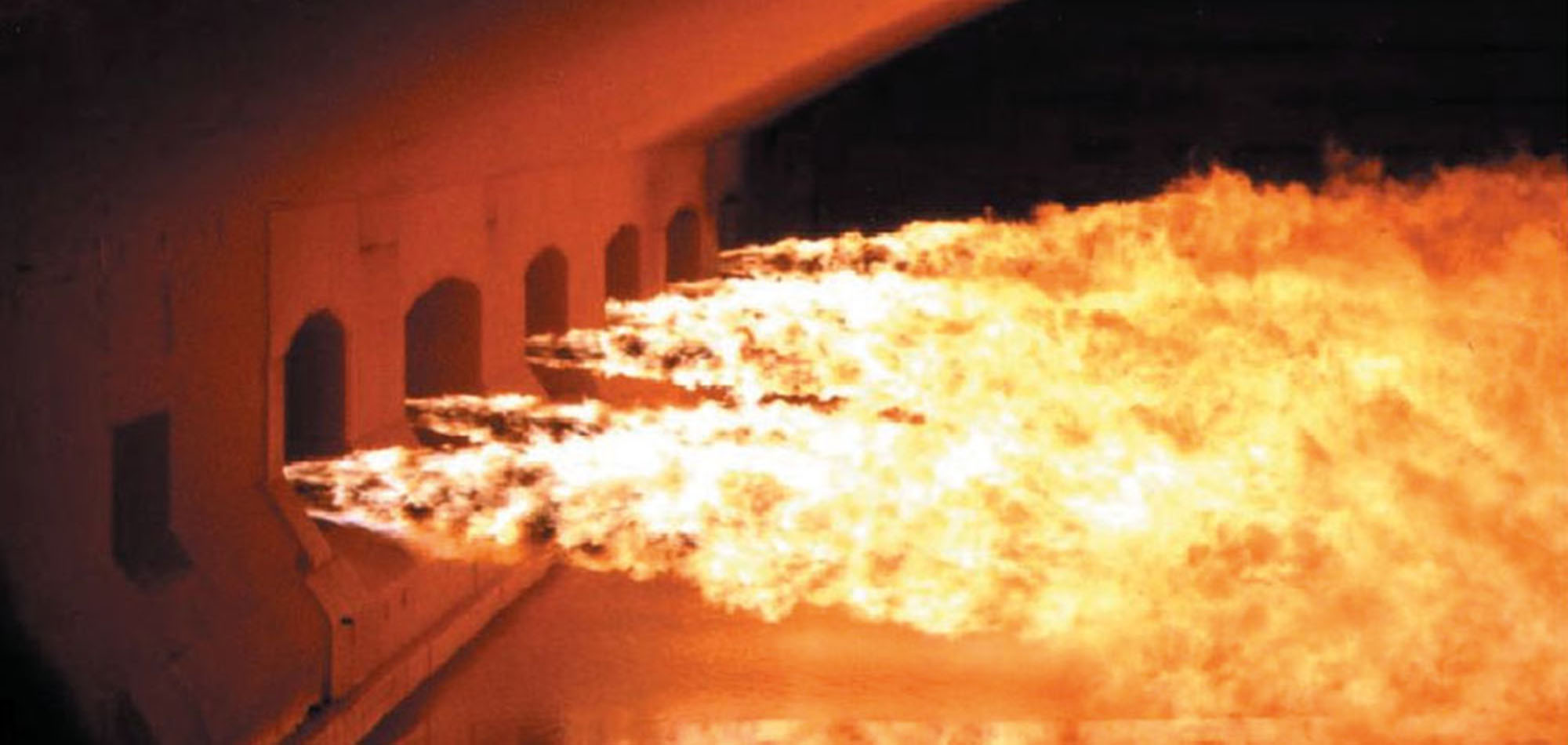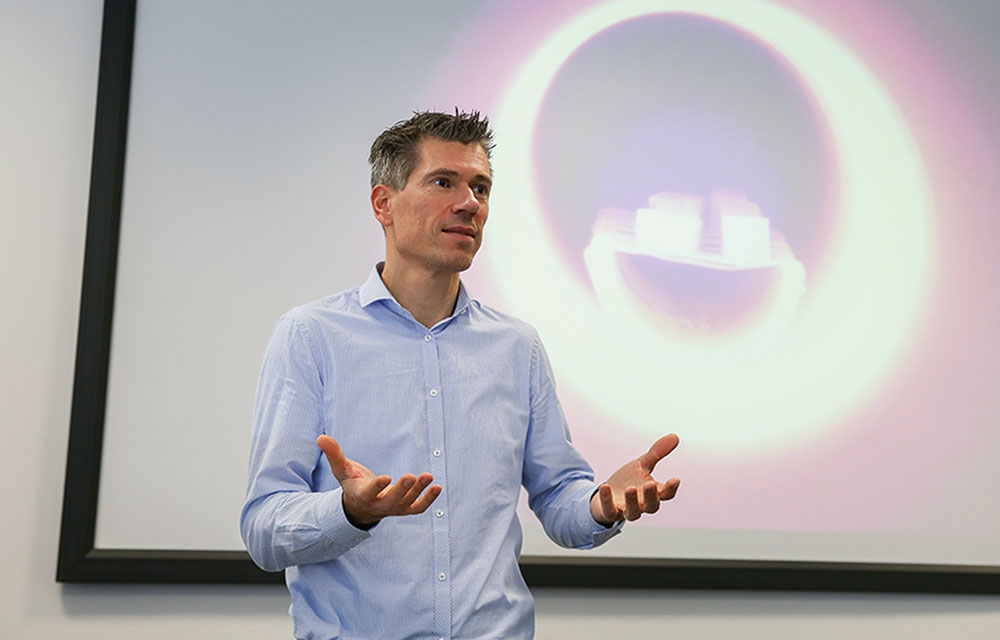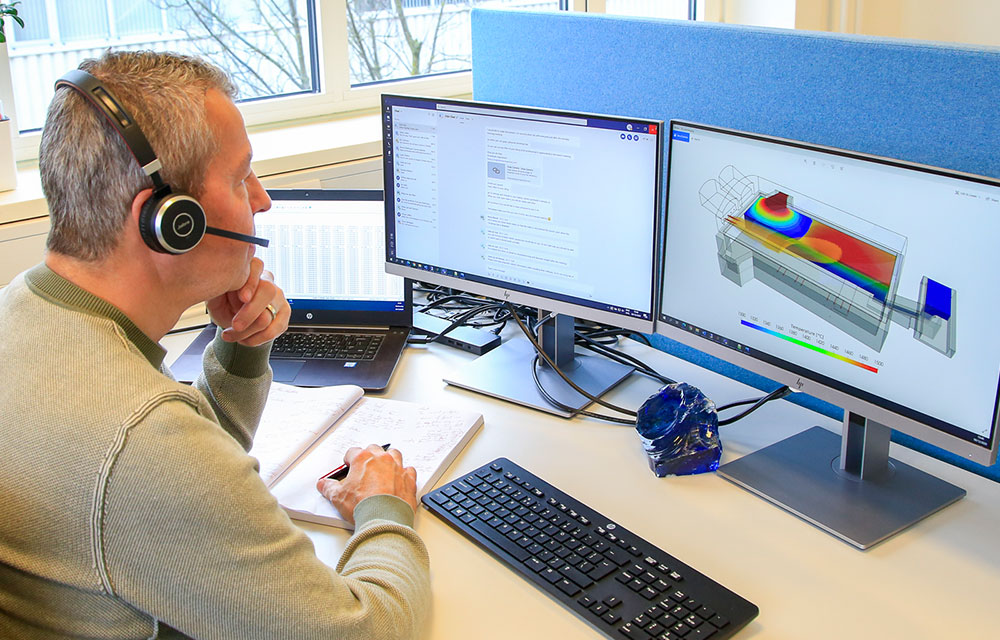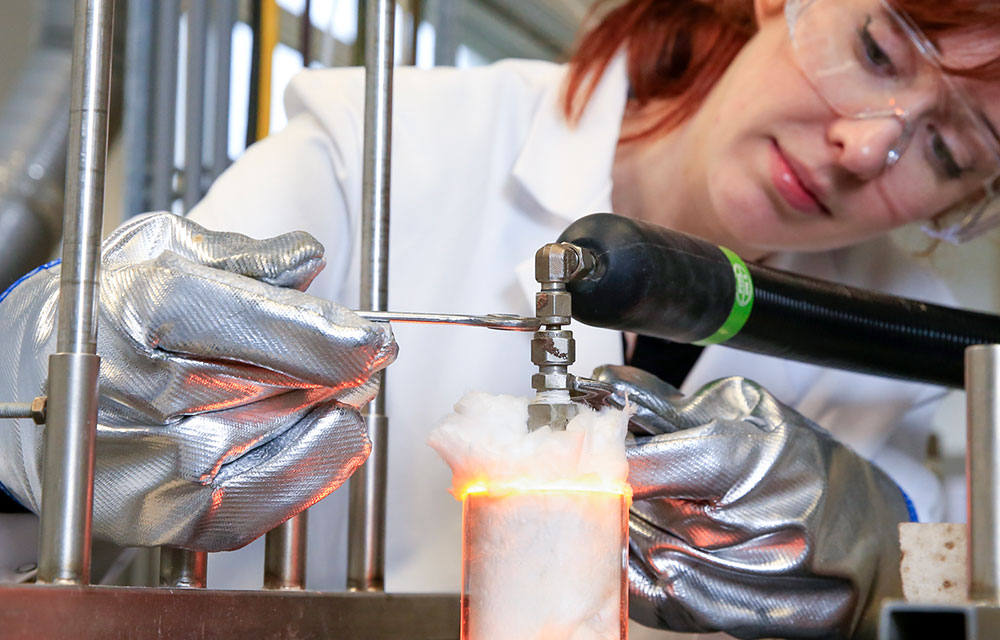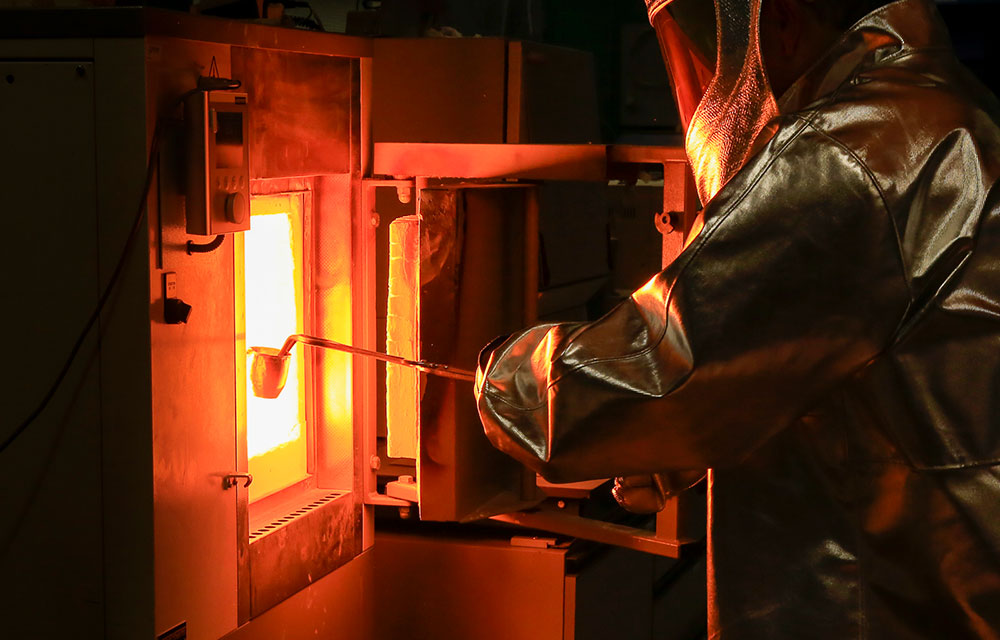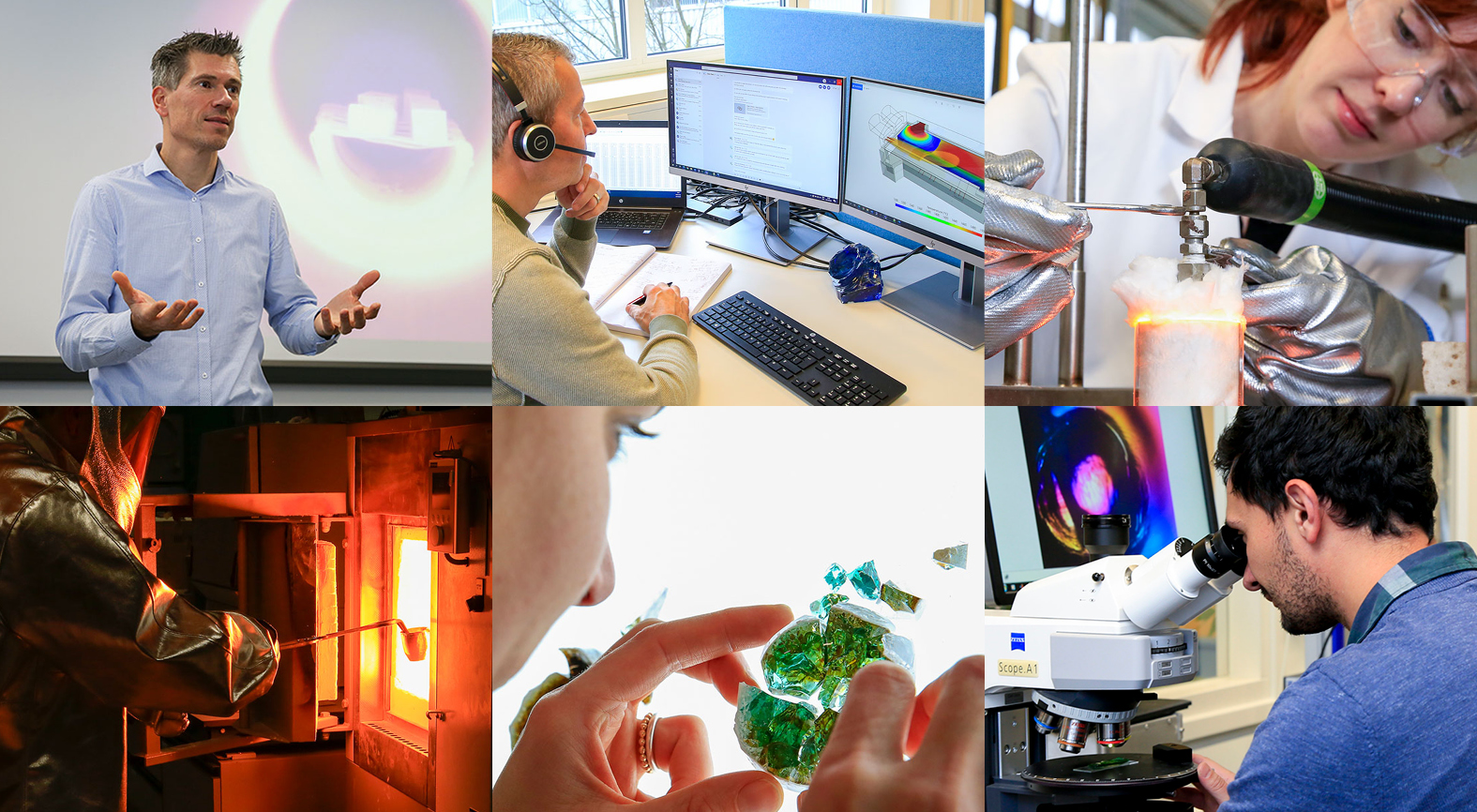Furnace measurements
CelSian can measure all kinds of process related issues like carry-over and evaporation of species from the glass melt.
In combination with temperature measurements of the internal refractories the potency for corrosion in the furnace can be determined. Flue gas compositions in the furnace are measured to determine the combustion effectiveness locally.
We provide you with clear recommendations how to make improvements in your furnace settings or design to enhance furnace lifetime and/or improve product quality.
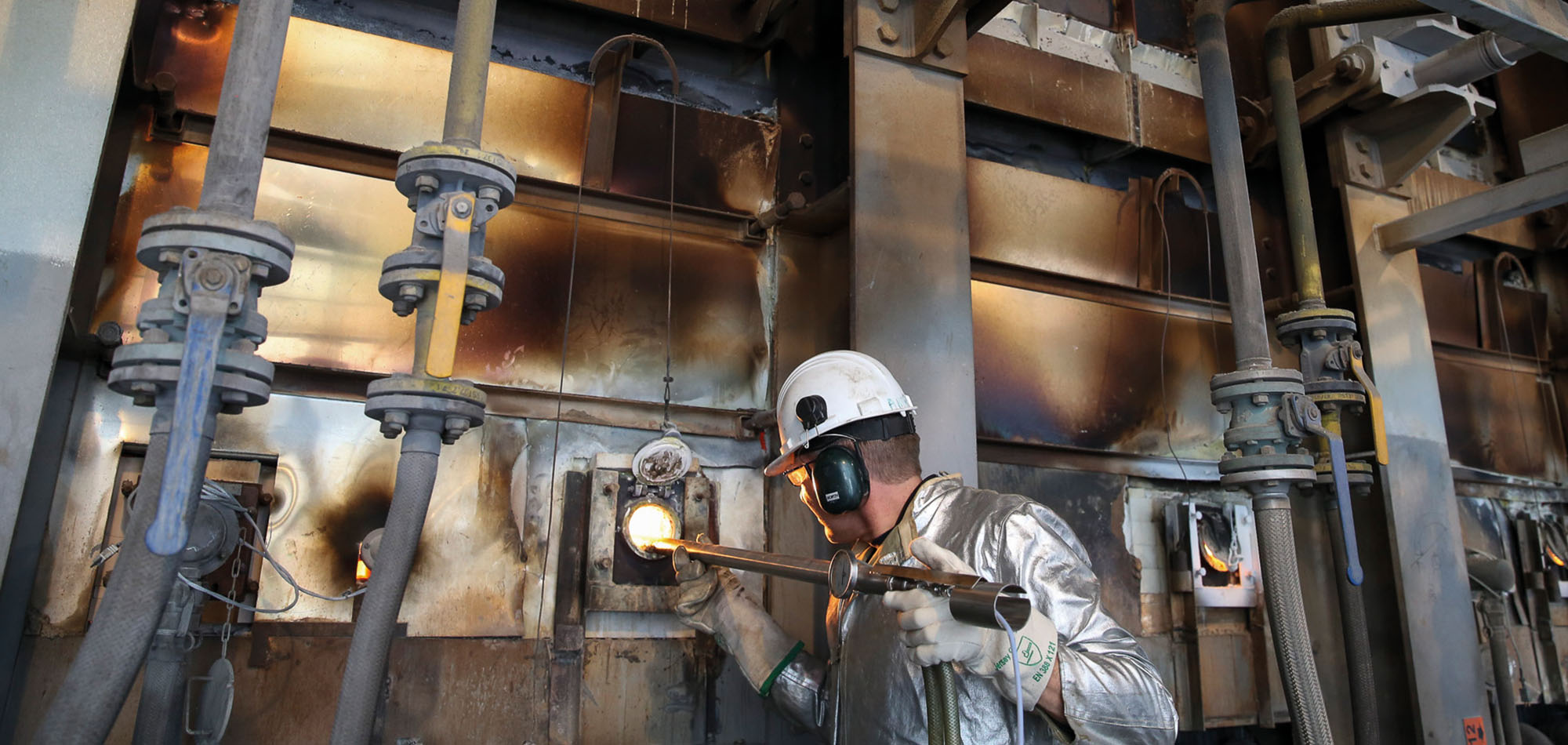
CelSian has performed many process measurements over the last 30 years on industrial carry-over and evaporation. Every glass manufacturer has to face the negative effects that carry-over of batch particles and/or evaporation of volatile (alkali) species can bring. Carry-over material (e.g. sand, dolomite, limestone, fine cullet) that is entrained in the combustion gases will interact with the refractory material of the superstructure, burner ports and top layers of the checker work in the regenerator to cause corrosion. Volatile species (e.g. NaOH) that evaporate from the glass melt/batch blanket also react with the superstructure of the furnace and cause corrosion of (for example) the crown. Furthermore, these volatile species (e.g. sodium, potassium) react with the sulfur during cooling of the flue gas to form salts that can both corrode the refractory materials used in the regenerator and block the flow of air/flue gas through the regenerator or flue gas channel. These effects reduce the lifetime of a furnace dramatically.
CelSian will investigate the current evaporation and carry-over rates that are taking place inside the furnace and give advice on how to minimize those. Also critical locations where refractory corrosion is more likely to take place will be pointed out. If a new batch formulation is to be tested in the furnace process, CelSian can investigate the impact of the new composition on carry-over and evaporation rates.
Measurements in combination with reviewing furnace settings can also focus on minimizing emissions while keeping yield at expected levels.
